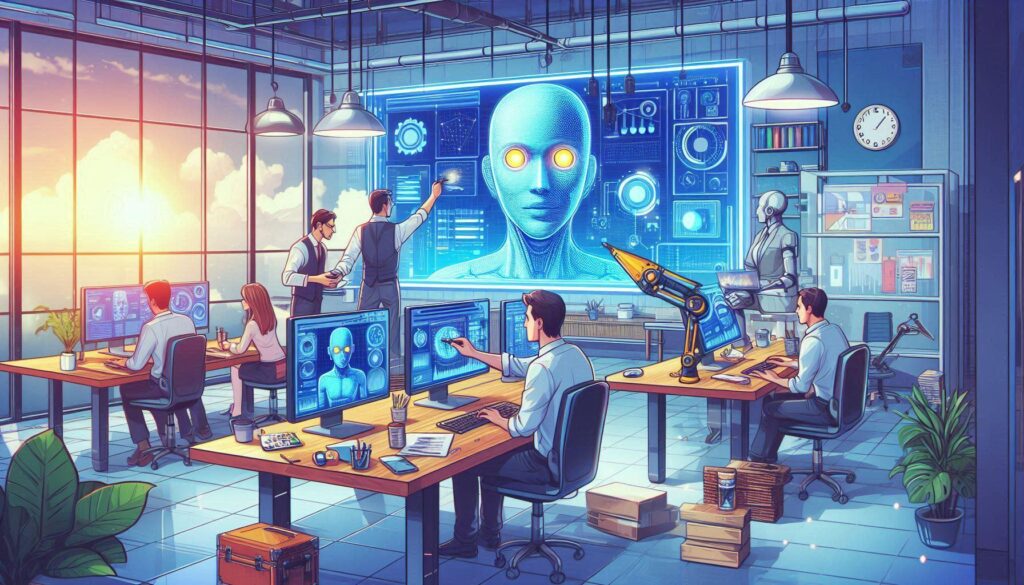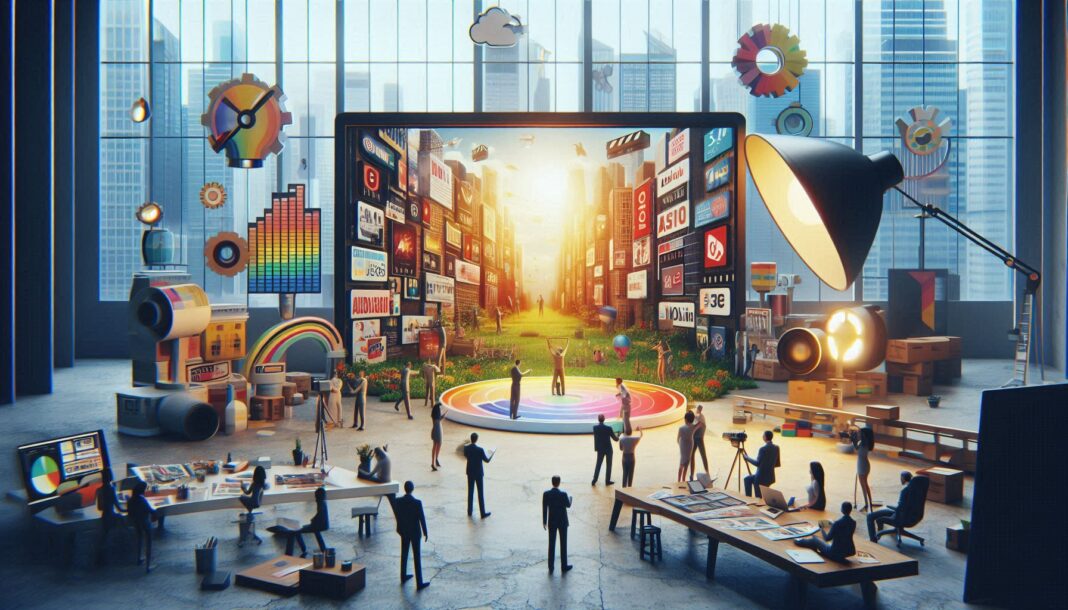One of the most thrilling and controversial domains of AI assimilation is in the creative department. The heart of an agency’s essence has long been its creative work—the grand idea, the memorable slogan, the emotionally connective advertisement. Generative AI technologies such as large language models for copy and image generators for visuals can now make thousands of versions of ad assets in the blink of an eye.

The advertising industry, once the sole domain of human imagination and gut feeling, is in the midst of a fundamental shift. The transformation isn’t the result of a new communications channel or a new form of copy; it’s being engineered by something far more elementary: Artificial Intelligence (AI). For decades, the advertising agency process was a formulaic, if occasionally disorganized, multi-step process: market study, strategy creation, creative development, production, media planning, buying, and, ultimately, performance measurement. Nowadays, AI is inserting itself into nearly every step of that process, not as an ancillary tool, but as a co-pilot that’s speeding up the whole process, making it smarter, and often more efficient than ever before. This technological change isn’t only about velocity; it’s about completely redefining the value that an agency provides, shifting the human component away from repetitive tasks and toward more advanced strategic thought and profound emotional creativity—the exact same things machines can’t yet do.
The first and most straightforward effect of AI is within data analysis and market research. Long ago, deep understanding used to need a squad of analysts to spend weeks digging through piles of consumer data, surveys, and sales statistics. AI technology, fueled by Machine Learning (ML), now achieves this in minutes. They can sift through petabytes of unstructured data such as social media posts, video transcripts, and live search queries to identify nascent trends and micro-segments of consumers that human eyes would overlook. This real-time intelligence provides agencies with a huge benefit, enabling them to customize strategies with an accuracy that was not possible beforehand. Rather than having to wait for a quarterly report, agencies can now receive real-time feedback on why a campaign is not performing as it should, and they can make immediate changes. This transition from back-page reporting to forecasting analytics indicates agencies are no longer simply responding to the market but foreseeing it, shifting from being historians to being futurists.
One of the most thrilling and controversial domains of AI assimilation is in the creative department. The heart of an agency’s essence has long been its creative work—the grand idea, the memorable slogan, the emotionally connective advertisement. Generative AI technologies such as large language models for copy and image generators for visuals can now make thousands of versions of ad assets in the blink of an eye. A copywriter who used to spend an hour writing ten headlines can now write a hundred using AI, try out the top five, and edit the best one, all in the same hour. This doesn’t mean the copywriter is obsolete; it means their job has evolved. They are no longer typists; they are editors, curators, and strategic prompters. The human role shifts from creation to direction, providing the emotional intelligence, brand guardrails, and cultural nuance that AI still lacks. They are the ones who put the “soul” into the machine-generated shell, ensuring the output resonates authentically with an audience. The payoff is staggering: it cuts by orders of magnitude the time spent on iterative work and frees human creatives to innovate on the truly disruptive, breakthrough concepts that an algorithm would never be able to think of.
The media department itself has also been completely revolutionized, perhaps more than any other. AI powers programmatic advertising, automated buying and selling of advertising space. AI technology today is responsible for real-time bidding, campaign optimization, and budget management on multiple platforms in microseconds. It scrutinizes everything from audience activity, context relevance, time of day, and even weather conditions to determine the best time and price at which to display an ad. This complexity far exceeds human capabilities. For the media team, this translates into less time spent on manual orders of insertion and more time spent on thinking through strategic media architecture. Their attention has turned to setting the macro strategy—what platforms are important, what the major KPIs are, and how AI platforms can be set up in order to drive business results—rather than getting bogged down in the minutiae of day-to-day execution. AI’s continuous learning and self-optimization capacity means media performance is consistently enhanced, generating an exponentially higher return on investment (ROI) for clients.
While these amazing breakthroughs are being made, there are challenges to integrating AI. One of the largest is the moral and legal ambiguity of AI-created content. Copyright ownership questions regarding images or text produced by models learned on human work are still being decided in court cases. Agencies need to be open with clients regarding the involvement of AI and that they have strict human control so they don’t inadvertently use copyrighted material or produce content that is biased, inaccurate, or off-brand. Then there’s the danger of too much reliance, as the imperative for efficiency brings in a tide of dull, formulaic, and eventually dull content, so-called “algorithmic mediocrity.” The human factor, with its ability for disruptive creativity and appreciation for profound human feeling, is still the last quality control and the wellspring of genuine differentiation. The agencies that will thrive will be the ones who see AI as a multiplier of their greatest human minds, not a substitute for them.
Another major challenge is the skill mismatch within the agencies themselves. The old job roles are transforming at a very high speed. The new ad pro has to be a hybrid skill—a creative who gets data, a strategist who can “speak” to the algorithm, and a media planner who is a master of platform setup. Agencies are being forced to spend big money on training and upskilling their current workforce, learning how to work with AI as a strong partner instead of fearing it as an enemy. The agency of the future will not be one that is fully automated, but one that is human-led and AI-powered.
In the end, AI is not killing the advertising agency; it’s liberating it. It’s specializing in the mundane, repetitive, and data-intensive work that used to drain people, leaving the team free to do the things that truly add value: rich client relationships, sophisticated problem-solving, and great, culturally insightful creative ideas. The agency process is evolving from a linear, glacial factory line into a fast-moving, hyper-efficient loop where data drives creativity, and creativity is immediately tested and fine-tuned by data. The fundamental purpose of advertising remains unchanged—to connect people and brands—but the how is becoming a dazzling dance between human intuition and algorithmic precision. The agencies that accept this new collaboration, learning to control the art of the ‘prompt’ and understanding the irreplaceable value of human judgment, are not merely staying alive; they are well positioned to lead the next golden era of advertising.






